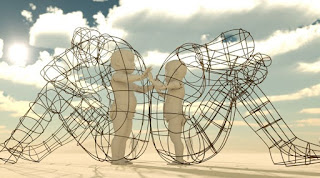Well-known to virtually everyone, stress is a familiar
condition that anyone can relate to, and many tend to find the ability to bond
with others, no matter how brief, based on the stress involved in certain activities
such as school or work. Alina Dizik, a freelance journalist and writer with
stories published in various popular news outlets such as Wall Street Journal, BBC News, and Financial Times, addresses those particularly in the workforce on
the effects of stress. She acknowledges how stress can be a good motivator for
upping one’s efficiency and focus on a task as many people tend to think, but
she also goes on further to explain when stress begins to reach the point of
being unhealthy, which many more people take longer to notice until it is too
late. She does not go too much into detail on the actual effects of the harmful
long-term stress besides noting common issues especially known in the US to be
associated with it, but she aims to educate working adults on how to identify
when stress is becoming less of a healthy push and more of negative lifestyle.
The
article starts with an anecdote about a neonatal nurse, Jennifer Welker, and
her experience with stress as both healthy and unhealthy. Her work with newborn
children led to experiencing many deaths in the hospital, but the pressure she
endured from it was turned into a force that only made her stronger and more
immune to the difficult situations to allow for more efficient work. It got to
the point where she believed she “was too good at [her] job” while spending
time often in a morgue, but eventually the pressure broke through her carefully
constructed exterior, and she crumbled under it. She then had to turn to a
jewelry business, at first only part-time, and it soon became her new full-time
job when the stress became too much to bear. This personal account was aimed to
create a clear idea of when stress is no longer a helpful force and merely a
troublesome one, and it also shows that it is important to abandon that
unhelpful pressure much like Welker has. It essentially sets up the fine line
that Dizik creates by allowing the audience to know exactly what she is talking
about in her article.
This
fine line is further drawn with the contrast between the healthy sort of stress
with the unhealthy version. Using parallelism, she shows the clear difference
in effects coming from both sides, and it appeals to her credibility when these
differences hopefully come off as logical and reasonable for a reader to take
in. By stating the health problems long-term stress causes while short-term
stress tends to only help people become more focused and efficient, the reader
is able to see sense in the claim she is making, and is also more willing to
learn what she aims to teach them toward the end of the article on how to
identify where their tipping point lies with pressure.
Although
Dizik made a good point of showing the clear divide between healthy and unhealthy
stress, I personally do not feel as though she actually taught me anything more
with the article besides the fact that realizing the harmful sort of stress is
harder to diagnose in one’s self. Her offered solutions were ideas that I could
come up with on my own without the help of outside influence, so although I
have a reinforced fine line between good pressure and bad, I did not otherwise
really gain anything from her article.

